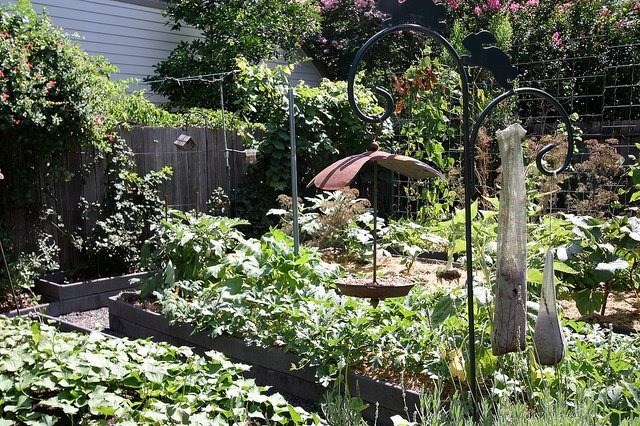For gardeners looking to improve soil health, increase yields, and reduce pests and diseases, rotating crops annually is a game-changing practice. Crop rotation involves changing the types of crops grown in specific areas of your garden each year. This simple yet effective strategy can lead to a more productive and sustainable garden. Here’s why crop rotation is important and how to implement it in your garden.
Benefits of Crop Rotation
- Improves Soil Health: Different plants have varying nutrient needs and root structures. By rotating crops, you prevent the depletion of specific nutrients in the soil and help maintain a balanced nutrient profile. For example, legumes like beans and peas fix nitrogen in the soil, benefiting subsequent crops that require more nitrogen.
- Reduces Pests and Diseases: Pests and diseases tend to target specific plants. When the same crop is planted in the same spot year after year, pests and pathogens can build up in the soil. Rotating crops disrupts their life cycles and reduces the likelihood of infestations and infections.
- Enhances Soil Structure: Different plants have different root systems, which affect soil structure in various ways. Deep-rooted plants can help break up compacted soil, while shallow-rooted plants help prevent erosion. Crop rotation ensures a diverse range of root structures, promoting healthier soil.
- Increases Yields: Healthy soil leads to healthier plants, which in turn produce higher yields. By rotating crops and maintaining soil fertility, you can maximize the productivity of your garden over time.
How to Rotate Crops in Your Garden
- Plan Your Garden Layout: Divide your garden into sections and plan which crops will be planted in each area. Consider grouping plants based on their families, as plants in the same family tend to have similar nutrient needs and pest issues.
- Create a Crop Rotation Schedule: Develop a multi-year plan that outlines where each crop will be planted in successive years. A common approach is to use a three- or four-year rotation cycle. For example, in a three-year rotation, you might rotate between legumes, leafy greens, and root vegetables.
- Group Plants by Families: Rotate crops by plant families to avoid depleting the soil of the same nutrients. Common plant families include:
- Nightshades: Tomatoes, peppers, eggplants, and potatoes
- Legumes: Beans and peas
- Brassicas: Cabbage, broccoli, cauliflower, and kale
- Alliums: Onions, garlic, leeks, and shallots
- Cucurbits: Cucumbers, squash, pumpkins, and melons
- Root Vegetables: Carrots, beets, radishes, and turnips
- Record Keeping: Keep detailed records of what you plant and where each year. This helps you track your crop rotation plan and make adjustments as needed. Record-keeping can also provide valuable insights into what works best for your garden.
- Use Cover Crops: Plant cover crops, also known as green manures, during off-seasons or between rotation cycles. Cover crops like clover, rye, and vetch can improve soil fertility, prevent erosion, and suppress weeds.
Sample Crop Rotation Plan
Here’s a simple four-year crop rotation plan for a vegetable garden:
- Year 1:
- Bed 1: Legumes (beans, peas)
- Bed 2: Brassicas (cabbage, broccoli)
- Bed 3: Root Vegetables (carrots, beets)
- Bed 4: Nightshades (tomatoes, peppers)
- Year 2:
- Bed 1: Brassicas
- Bed 2: Root Vegetables
- Bed 3: Nightshades
- Bed 4: Legumes
- Year 3:
- Bed 1: Root Vegetables
- Bed 2: Nightshades
- Bed 3: Legumes
- Bed 4: Brassicas
- Year 4:
- Bed 1: Nightshades
- Bed 2: Legumes
- Bed 3: Brassicas
- Bed 4: Root Vegetables
Additional Tips for Successful Crop Rotation
- Amend Soil Annually: Add compost, aged manure, and other organic matter to your soil each year to maintain its fertility and structure. This practice complements crop rotation and enhances soil health.
- Monitor Soil pH: Different crops thrive in different pH levels. Test your soil regularly and amend it as needed to ensure optimal growing conditions for each crop.
- Rotate with Cover Crops: Incorporate cover crops into your rotation plan. They add organic matter to the soil, improve its structure, and help control pests and diseases.
- Be Flexible: While it’s important to follow your crop rotation plan, be prepared to make adjustments based on your garden’s performance. Flexibility allows you to respond to unexpected challenges and optimize your garden’s productivity.
Conclusion
Rotating crops annually is a simple yet powerful strategy to enhance your garden’s health and productivity. By improving soil health, reducing pests and diseases, and increasing yields, crop rotation can lead to a more sustainable and successful gardening experience. Start planning your crop rotation today and enjoy the benefits of a thriving garden year after year. With a little effort and careful planning, you can create a resilient and bountiful garden that flourishes in every season.











